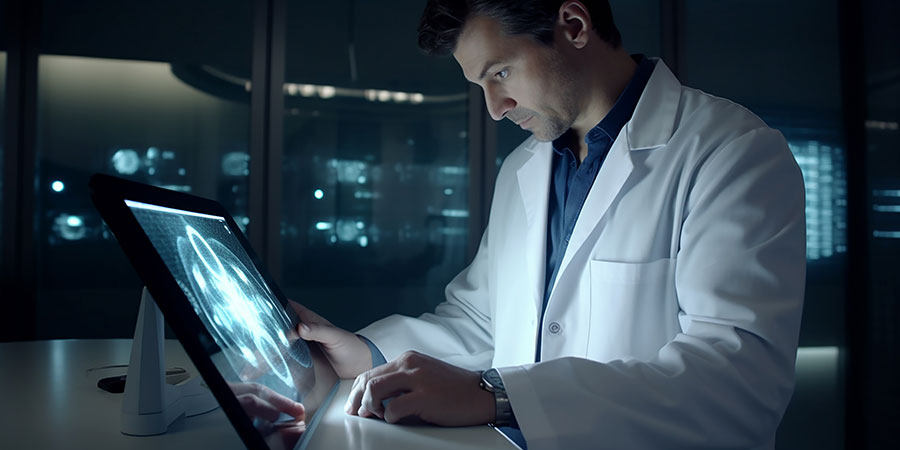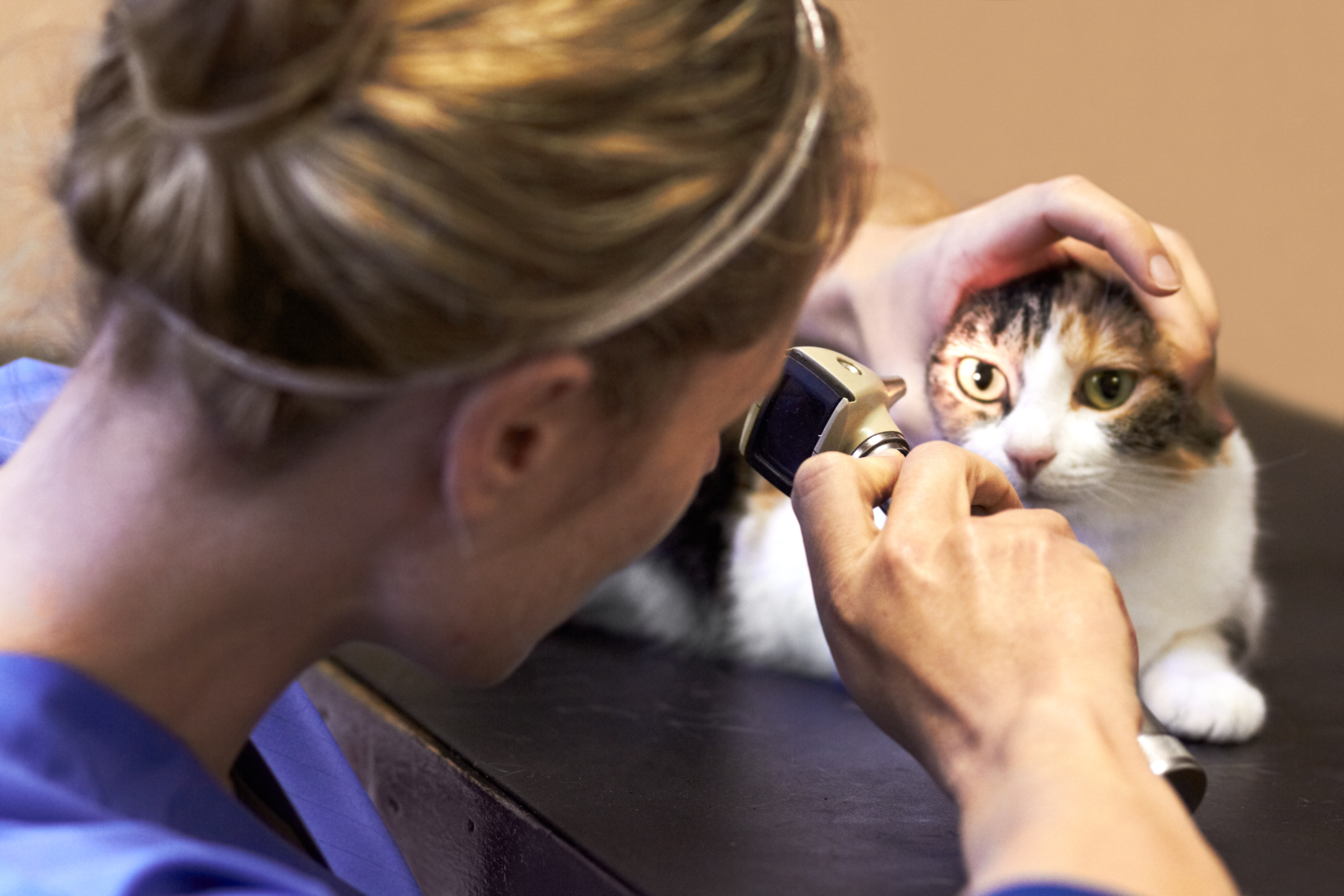Veterinary Ophthalmology: Mastering Eye Examinations
14-Apr-2025
Eyes are not just windows of the soul—they're also pretty important sentinels of an animal's well-being. Veterinary ophthalmology is a veterinary specialty devoted to the diagnosis and treatment of diseases in animal eyes. Thanks to developments in advanced veterinary diagnostics, experts in animal eyes can now give accurate and beneficial care, which equals better results for livestock and pets.
The Role of Veterinary Ophthalmology
Vision health in animals is very important because vision is directly involved in the mobility, behaviour, and health of animals. Animals don't whine when ill, and thus veterinarians must be able to see signs of impending eye disease. Veterinary ophthalmology is concerned with eye diseases such as cataracts, glaucoma, corneal ulcers, and retinal disease, which, if not treated, result in blindness or systemic disease.
Animal eye specialists receive thorough training to familiarize themselves with the nuances of ocular anatomy and treatment of disease in a vast range of species. From cats and dogs to horses and exotics, every animal has its own special eye anatomy that must be familiar.
Advanced Veterinary Diagnostics in Eye Care
Advanced diagnostic techniques are the foundation of modern veterinary ophthalmology to enable proper diagnoses. The majority of the most widely used diagnostic tools include
1. Slit Lamp Biomicroscopy
This magnification device enables specialists of animal vision to examine the cornea, lens, and anterior chamber at near vision. It detects microdamage, inflammation, or hidden cataracts.
2. Tonometry
Intraocular pressure is measured as the critical parameter for glaucoma detection. Tonometers allow immediate non-penetrating readings and thus allow early intervention to avoid damage to the optic nerve.
3. Electroretinography (ERG)
ERG is a diagnostic test that assesses retinal function by quantifying electrical responses in response to light stimulation. ERG is of first-order significance in the diagnosis of progressive retinal atrophy (PRA) and other inherited retinal disorders.
4. Ocular Ultrasound
When corneal cataracts or opacity limit the visibility of internal structures, ultrasound scanning facilitates the assessment of the vitreous humor and retina for pathology.
5. Fluorescein Staining
A simple, quick test, fluorescein staining detects corneal ulcers and scratches that are not visible to the naked eye.
These state-of-the-art vet diagnostics enable animal eye experts to prescribe correct treatments, with optimal cure rates and preservation of eyesight.
Eye Disorders of Companion Animals
1. Cataracts
Cataracts cause opacification of the lens and blurred vision evolving into blindness. The cause is aging, diabetes, and heredity, but veterinary ophthalmology offers surgical interventions such as phacoemulsification to restore vision.
2. Glaucoma
Rising intraocular pressure traumatizes the optic nerve, presenting as pain and loss of vision. Diagnosis early in life through sophisticated diagnostics must be done since unaddressed glaucoma results in permanent blindness.
3. Corneal Ulcers
Corneal ulcers due to infection or scratches are painful and, if left untreated, will become worse. Medicated eye drops and, in extreme cases, surgical grafting by animal eye experts, cure it.
4. Dry Eye (Keratoconjunctivitis Sicca)
Dryness, inflammation, and chronic damage to the cornea due to insufficient secretion of tears. Artificial tears and immunosuppressive medication that has to be taken for life are the treatments for this.
5. Retinal Diseases
Complications such as retinal detachment or degeneration necessitate urgent action. Referral-level veterinary diagnostic exams such as fundoscopy and ERG serve to determine the degree of damage and organize treatment modalities.
The Specialist in Animal Eyes
Animal eye experts are veterinarians, but then again, so much more than that: experts in diagnostics and surgeons with both experience and bedside manner. Their job is
- Performing full eye exams utilizing the latest veterinary diagnostics.
- Carrying out complex procedures such as cataract surgery, corneal transplant, and eyelid surgery.
- Educating owners on preventive care as well as early symptom detection.
- Working in conjunction with general veterinarians for end-to-end wellness management.
- Screened veterinary ophthalmology professionals are thorough in providing pets with the best possible eye care.
Preventive Care and Early Detection
Prevention is the best medicine. Owners should be aware of redness, cloudiness, tearing, or behavioural changes (e.g., bumping into things). Regular eye exams by animal eye specialists can detect problems before they become major problems.
Regular checks need to be conducted on high-risk breeds (for example, Pugs, Shih Tzus, and Cocker Spaniels). The most up-to-date vet diagnostics can catch issues early on, so a treatment can be administered in time to save an animal's eyesight.
Conclusion
Veterinary ophthalmology is at the forefront of the maintenance of eye health of animals. Equipped with advanced veterinary diagnostic machinery, animal eye specialists can identify and cure eye illnesses with complex complications in the right way. From a routine checkup to an urgent surgery, professional skills ensure that pets and livestock possess good eyesight and live a quality life.
With appropriate knowledge and timely action, pet owners can team up with animal eye specialists to safeguard the vision of their beloved pets for years to come. Because clear vision assures a happier, brighter life for our beloved pets.
Recent Posts

Impact of 2024 HCPCS Updates on Healthcare Providers
16-Aug-2024
The 2024 Guide to Employee Motivation
21-Aug-2024
7 Ways to Improve Performance Management at Your Company
23-Aug-2024
Choosing the Best HR Tool for Education: 5 Things You Need to Know
28-Aug-2024
Payroll Records: A Guide to Retention and Disposal
04-Sep-2024
AI Limitations Why Certain Jobs Will Always Require a Human Touch
09-Sep-2024
How the New HIPAA Rules Impact Reproductive Health Care Providers
13-Sep-2024
Best Strategies to Manage Toxic Employees and Boost Team Morale
20-Sep-2024
Top 7 Common Coding Errors That Trigger Audits and How to Prevent Them
26-Sep-2024
How OSHA is Involved in Mandating Protections for Employees
14-Oct-2024
FDA Software Classification Guidance
22-Oct-2024
Stay Ahead of FDA Inspections: Best Practices for Managing Form 483 Citations and Warning Letters
24-Oct-2024
Best Practices to Reduce Validation Effort and Costs
06-Nov-2024
Best Practices for Medical Device Software Validation and Risk Management
14-Nov-2024
Training Strategies to Comply with EEOC New Harassment Standards
14-Nov-2024
Guideline On Computerized Systems and Electronic Data in Clinical Trials
17-Dec-2024
What is Human Factor Engineering in Medical Terms?
17-Dec-2024
What is the Objective of Supervisor Training?
24-Dec-2024



